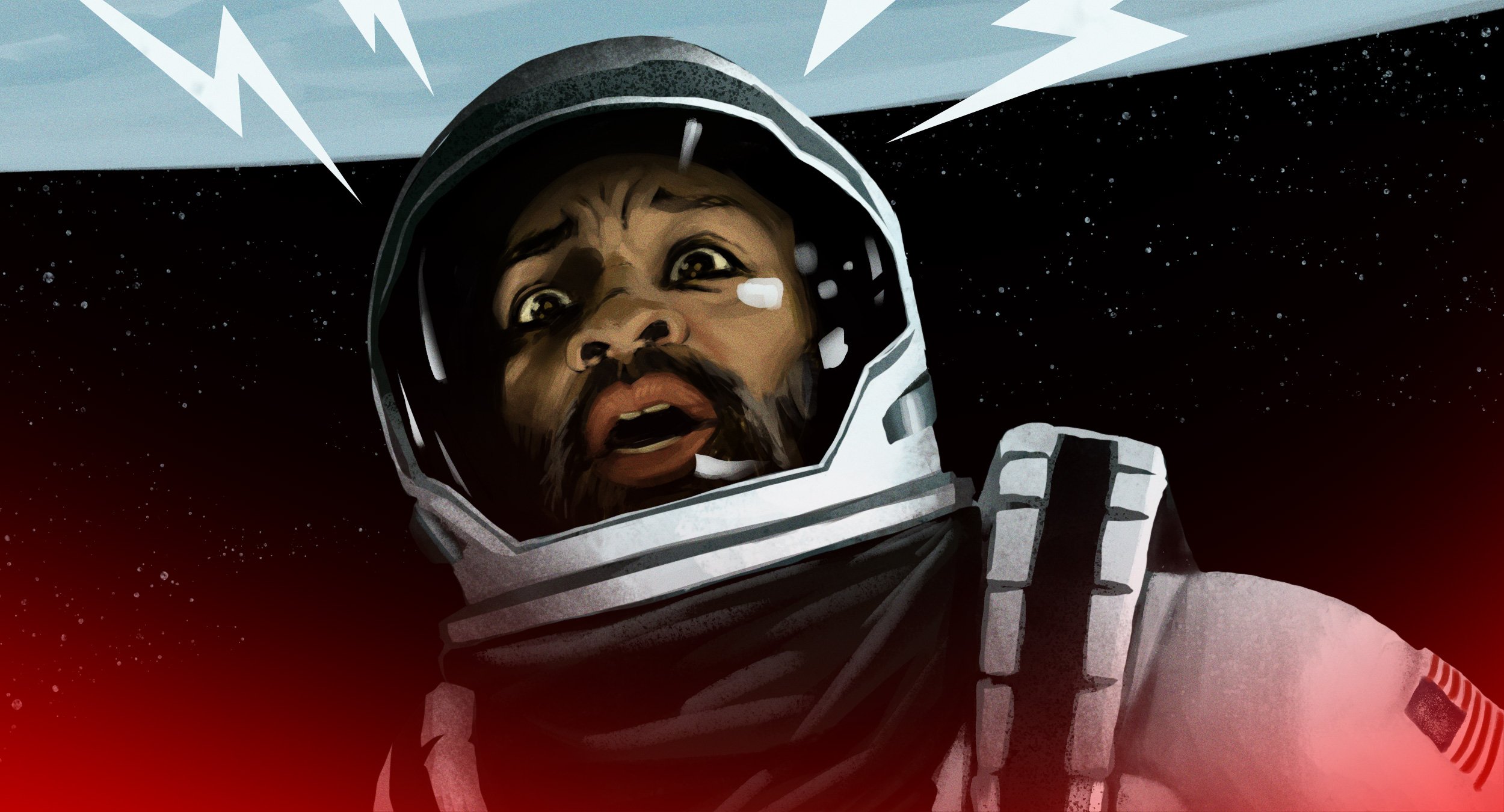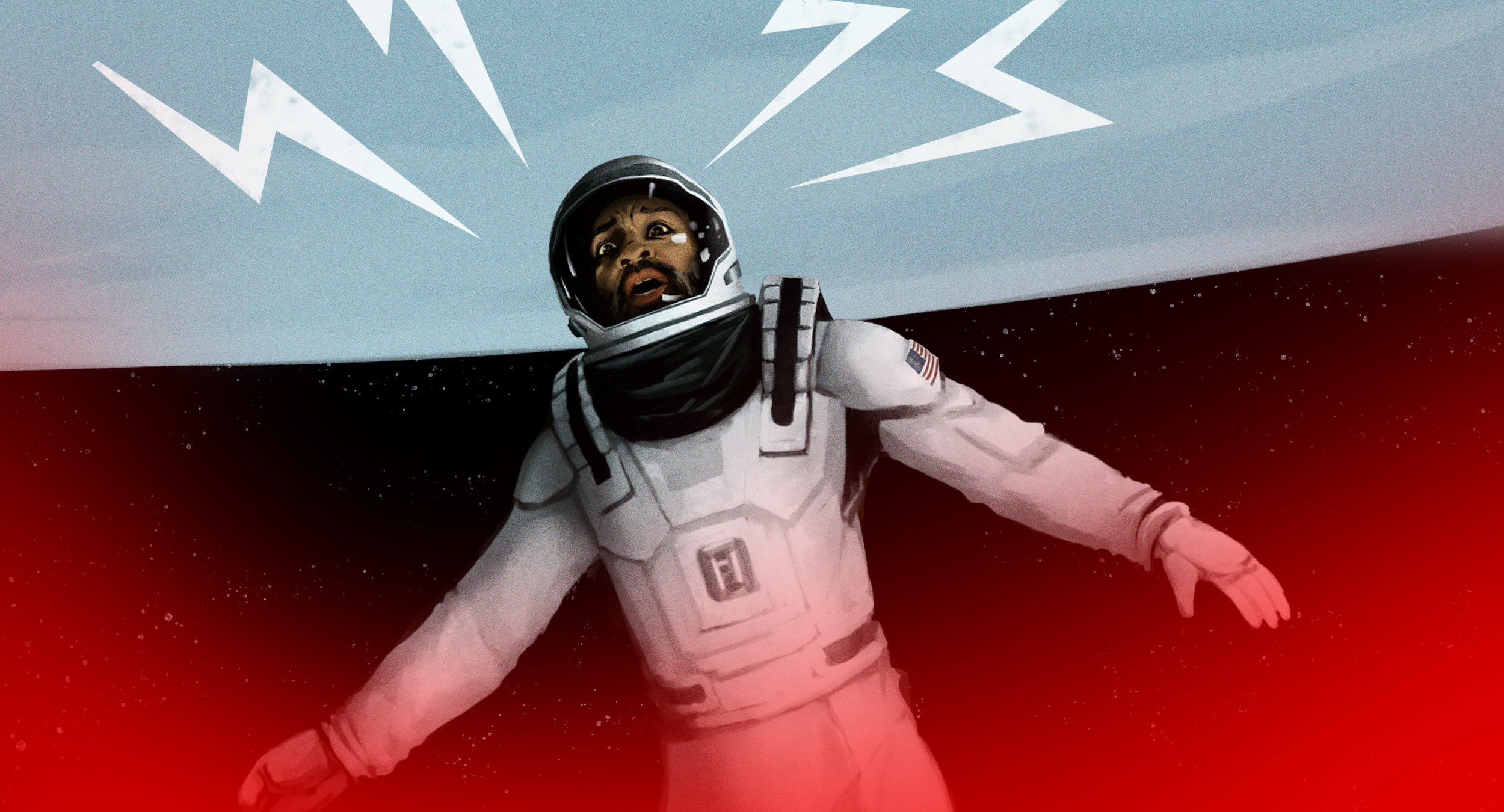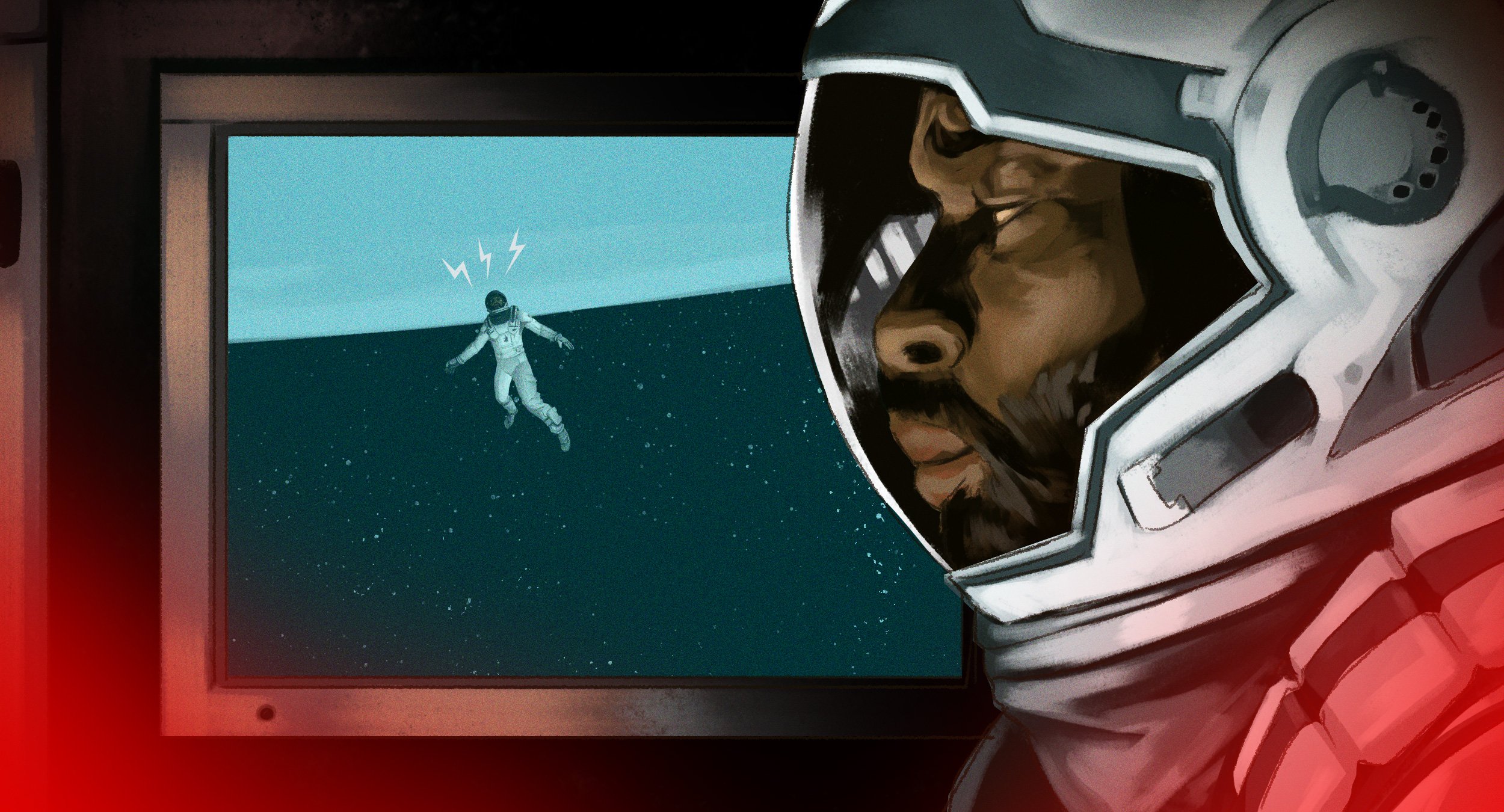What does extreme isolation do to a person?
by Ben Kuchera
Illustrations by Aaron Sacco. Our nonprofit generates funding in multiple ways, including through affiliate linking. When you purchase something through an affiliate link on this site, the price will be the same for you as always, but we may receive a small percentage of the cost.
The real hero of Interstellar starred in a psychological horror movie we never got to see
There is a horror movie hidden inside the narrative of Interstellar, and a secret hero among the film’s cast.
The 2014 Christopher Nolan film follows a crewed mission to find a habitable planet near, or perhaps through, a black hole before Earth becomes incapable of supporting human life. There are some apparent hints of the supernatural in the film’s opening hours, but the mission itself draws from known science about space travel, time dilation, and the theory of relativity.
The Science of Extreme Time Dilation in Interstellar
During one mind-bending action sequence, astronauts Cooper (Matthew McConaughey), Doyle (Wes Bentley), and Brand (Anne Hathaway) travel down to a nearby planet while Romilly (David Gyasi) stays behind to study the black hole. The timeline is both simple and brutal: the three astronauts are meant to spend an hour on the planet checking to see if it's a possible new home, which means, due to their proximity to the black hole, an incredible seven years will have passed for Romilly.
And that’s if everything goes according to plan.
Every hour we spend on that planet will be seven years back on earth
Which, of course, it doesn’t. When the team finally returns to their ship, after almost being killed by huge tidal waves and losing Doyle, they find that Romilly has spent 23 years in complete isolation. What was a few hours for the folks on the nearby planet became decades for Romilly in relative time. The now much older man seems a bit stunned by the appearance of two other human beings after so much time spent by himself.
This means that a character who had already talked about feeling uneasy in space had suddenly spent over two decades in deep space, on the edge of a black hole, completely alone. We never see the time from his point of view, nor do we hear much about what he went through. But his grayed beard and hesitant manner show that the experience changed him.
Gravitational time dilation on planet Mikal [Norwegian subtitle]
In the film Interstellar, the viewer follows Cooper (Matthew McConaughey), Doyle (Wes Bentley), and Brand (Anne Hathaway) down to a planet surface and we are left to wonder what happened to Romilly in the 23 years he experienced while they were away.
I wanted to answer a question that has been bugging me since the movie’s release: what in the living hell did he go through?
The power of a mission and mental framework
“As a professional astronaut, Romilly would have likely started their isolation in the expected, professional manner,” Konstantin Chterev, who works as a space psychologist lead at SAGA Space Architects, told Medicinal Media. “This would differ between individuals, but compared to the average person, an astronaut would likely be able to come up with a productive routine to keep themselves busy and sane. Astronauts are selected and trained to be highly cooperative, but also effective in working by themselves in isolation. They also tend to come from highly skilled, productive backgrounds where sticking to routines is common.”
Chterev has given the risks and challenges of long-term isolation in space exploration a lot of thought in his career, and he was able to put together an initial plan to create structure and have a fighting chance to stay motivated and sharp in the face of multiple decades of being completely alone.
“In that situation, I’d check if there were any immediate threats or dangers and work to resolve them before looking at short-term and long-term goals,” Chterev explained. “For those, I’d make an inventory of all available equipment, supplies, and consumables, then work out the math in case I’d need to ration or use anything sparingly. I’d then see what tasks I could complete in the next days, weeks, months, and years, then create a schedule accordingly, making sure to include time for rest and activities such as exercise and journaling to break up the work. I’d also make sure to include a consistent sleep schedule to keep my circadian rhythms in check, which can be aided by the lighting systems on board.”
In the long-term, however, the loneliness creeps in. Humans are social animals, and we just weren’t built to spend that much time in an alien environment, cut off from human contact. “Compared to the average person, Romilly would have been able to hold out for longer, but he wouldn’t necessarily have been immune to the challenges of 23 years of isolation,” Chterev said.
The more time you spend in isolation, the worse the effects can become, up to and including a degradation of the very routine that may be one of the only things saving you. What likely took place was a slow but steady decline of mental and physical functions, incrementally making everything about existence alone in deep space much more difficult.
Living with loneliness: the reality
“Negative effects can include decline in mood, cognition, and morale. In Romilly’s situation, he would have likely alternated between heavy workloads and periods of boredom in a situation where he wasn’t receiving any resupply from Earth,” Chterev speculated. “That environment may have added to any negative effects and contributed to existing feelings of monotony. From a physiological standpoint, his lack of resupply could have also contributed to deficiency in nutrition, which in turn may have exacerbated any existing physiological or psychological imbalances. The more isolated and confined humans are, the more likely they are to develop behavioral or cognitive conditions.”
There’s also the fact that space itself is nothing like any environment we may be used to on Earth, and that sense of disconnection from where you belong can be acute, even without the added stress of the extreme isolation.
“Astronauts also miss home in a sensory way (the smell of grass, the sight of a sunny day, the feel of their feet on the ground),” NASA explained in a blog post about isolation. “When those familiar experiences are taken away, it impacts a person’s motivation. Over extended periods of time, it can even affect the ability to make decisions. Scientists are concerned that altered gravity and radiation, combined with isolation and confinement, could pose real psychological hardships, leading to further danger for the crew in space.”
You can look for analogous reactions from people who have been punished with solitary confinement in prison, and the far-reaching effects that being kept from human contact has on the body and mind.
"One of the very serious psychological consequences of solitary confinement is that it renders many people incapable of living anywhere else," Craig Haney, PhD, APA member, and professor of psychology at University of California, Santa Cruz testified in 2012. "They actually get to the point where they become frightened of other human beings.”
When the rest of the team returns, they’re still reeling from the loss of Doyle on the planet they explored and grappling with the lack of a new home for humanity. Romilly’s experience is treated empathetically to some extent, but everyone has bigger metaphorical fish to fry. It’s unlikely he would find any relief in that type of reunion, and he is later killed in the film without much discussion of his monstrous span of time in isolation.
We need other human beings if we want to be healthy individuals
One of the most damning side effects of solitary confinement is an overall lower life expectancy if you are ever put through it — even if the span of time is much less than 23 years.
“Compared with individuals who were incarcerated and not placed in restrictive housing, individuals who spent any time in restrictive housing were 24% more likely to die in the first year after release, especially from suicide (78% more likely) and homicide (54% more likely); they were also 127% more likely to die of an opioid overdose in the first 2 weeks after release,” a 2019 study about the effects of solitary confinement on prisoners post-release found.
Romilly’s experience wasn’t as restrictive as a prisoner in solitary confinement. Based on the shots of the ship, we see he had a relatively large amount of room for movement, and he had the computer systems, his research, and cryosleep when necessary to help him along. But research shows us that an already challenging environment, prison, is much more tolerable than even short periods of isolation, which seem to have long-lasting negative effects.
Simply put: we need other human beings if we want to be healthy individuals.
The grinding, relentless nature of long-term isolation begins to chip away at someone’s reserves, no matter how prepared or driven they might be. “We can compensate and adapt to living in a social vacuum, but everyone has their limits,” Chterev said.
The more time you spend in isolation, the worse the effects can become
When there’s no choice but to keep going
There is one other factor that likely helped keep Romilly going, but it’s a much darker line of thought. Romilly probably felt as though he had no choice but to continue through the decades of isolation, because his mission might have been humanity’s best chance of survival. This wasn’t a situation where his needs were the most important. As far as he was concerned, giving up on his mission could have meant humanity’s extinction. He was stuck in a situation of indefinite isolation, knowing that not even death was an option. And as time went on, we know that his mental health would deteriorate while any pre-existing physical conditions would have probably worsened.
Interstellar was already telling an ambitious, large-scale story about time, human connection, and hope, so I understand why Romilly’s experience was something discussed, but not shown. What we know about isolation doesn’t paint a very comforting picture, although the details of his experience were not revealed. But for 23 years, he was alone, trapped in more of a horror movie than a promising science fiction yarn.
The rest of humanity had hope because he never gave up his.





